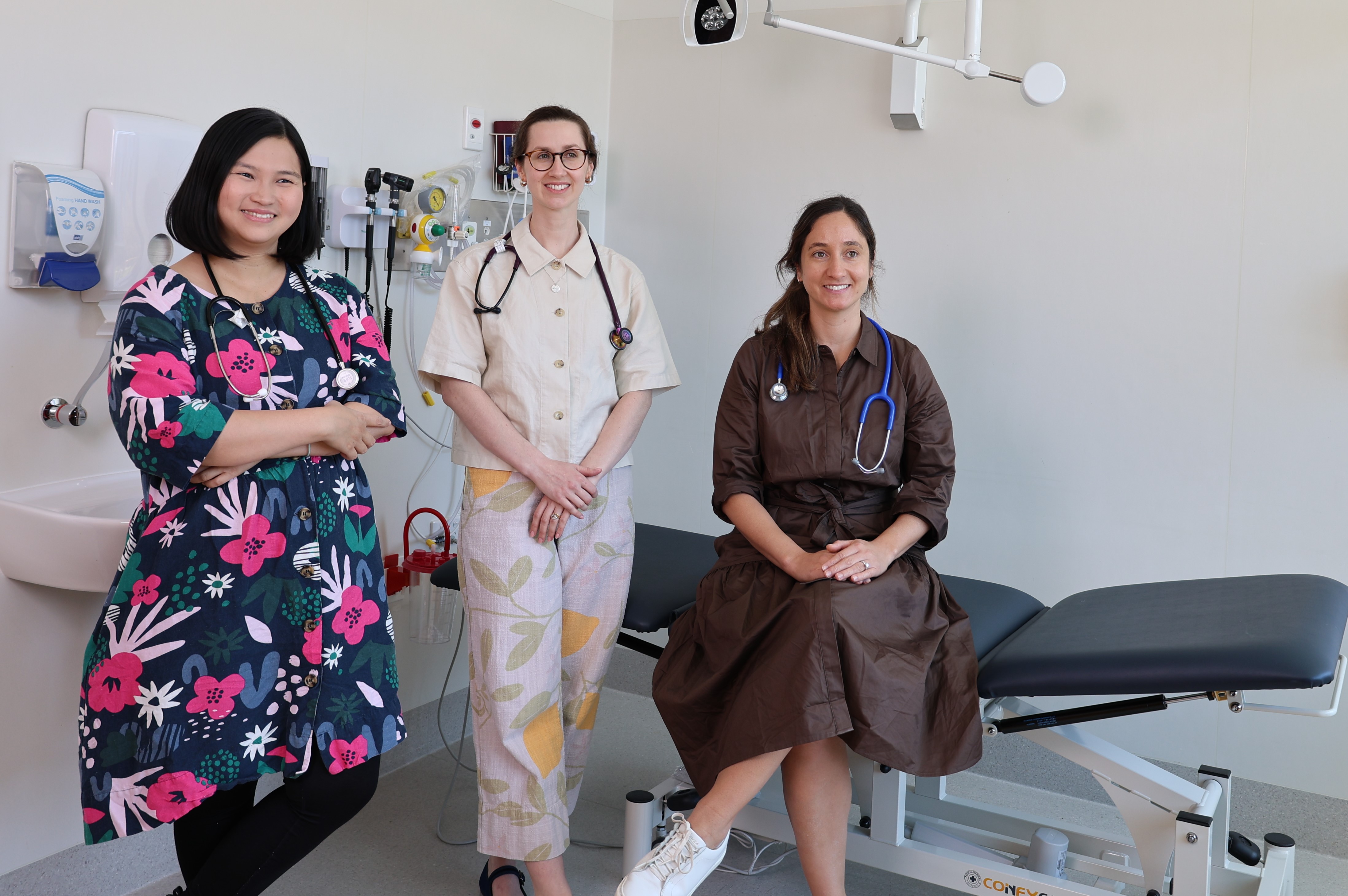Newest Telethon Research Fellows on track to transform care
 2026 Telethon Trust Research Fellows Dr Joo Anne Chiam, Dr Catherine Honey and Dr Abigail Hudson
2026 Telethon Trust Research Fellows Dr Joo Anne Chiam, Dr Catherine Honey and Dr Abigail Hudson
Perth Children’s Hospital (PCH) researcher and advanced medical trainee Dr Catherine Honey is hoping epithelial cells lining the airway tracts of babies presenting to PCH with bronchiolitis, could provide vital clues to why some infants are more likely than others to become seriously unwell.
The respiratory illness is the leading cause of infant hospitalisation in Australia, with babies under 12 months of age, most at risk.
Dr Honey is one of 3 PCH doctors awarded a Telethon Trust Research Fellowship in the latest round of the program and will use her bursary to culture airway cells from babies presenting with bronchiolitis to look for differences in the baseline characteristics and immune response. The study will compare cells from the roughly 2 per cent who become severely unwell with bronchiolitis, with those from babies who experience only mild illness.
She will also analyse clinical and other data to assess the influence of other factors on an infant's susceptibility to severe bronchiolitis, such as exposure to tobacco smoke or certain medications.
Dr Honey says severe bronchiolitis has a big impact on families and the health system. She hopes insights from her project will pave the way for improved therapies and fewer hospital admissions.
Dr Honey’s fellow Telethon Trust Research Fellows, Dr Joo Anne Chiam and Dr Abigail Hudson are also hoping to advance care for children and families.
Dr Chiam will test the acceptability of bedside ultrasounds as an alternative to x-rays in diagnosing collarbone fractures in children.
Her study will investigate not only the reliability and accuracy of ultrasound-based assessments compared with standard x-rays, but also their acceptability with families and clinicians, including a pain score component
Dr Chiam cites a host of advantages of point-of-care ultrasound over x-ray imaging, including that it is radiation free, portable and cost effective with a further bonus being that clinicians can become competent in its use with minimal training, in some cases in as little as 2 to 3 hours.
Dr Chiam says collarbone fractures are the most common fractures in children.
‘So, if this study finds that ultrasound imaging is a reliable and viable alternative to x-rays in the assessment of these breaks, we could improve the timeliness of these assessments, leading to enhanced patient flow through the emergency department and improved patient outcomes.’
Dr Hudson, an advanced trainee in paediatric clinical immunology will use her fellowship to trial an innovative approach to helping families recognise and manage children with severe allergy and anaphylaxis, particularly those living in rural and remote areas and from non-English speaking backgrounds.
With input from families, Dr Hudson and her co-researchers will develop an educational video that will be available in multiple languages and provide critical information including how and when to use an EpiPen.
The project will then evaluate the resource’s effectiveness against standard educational practices.
Dr Hudson says that although allergies and anaphylaxis are critical public health concerns and prevalent in culturally and linguistically diverse populations, most educational resources are geared to English-speaking consumers.
‘As effective management of food allergy depends on the ability of patients and their families to recognise symptoms and administer treatment promptly, it is vital we find ways of supporting families from culturally and linguistically diverse backgrounds.
Dr Hudson says a video has the potential to improve equity of care, reinforce clinic-based education and broaden the reach of education to include extended family and the child’s wider caregiver group.

